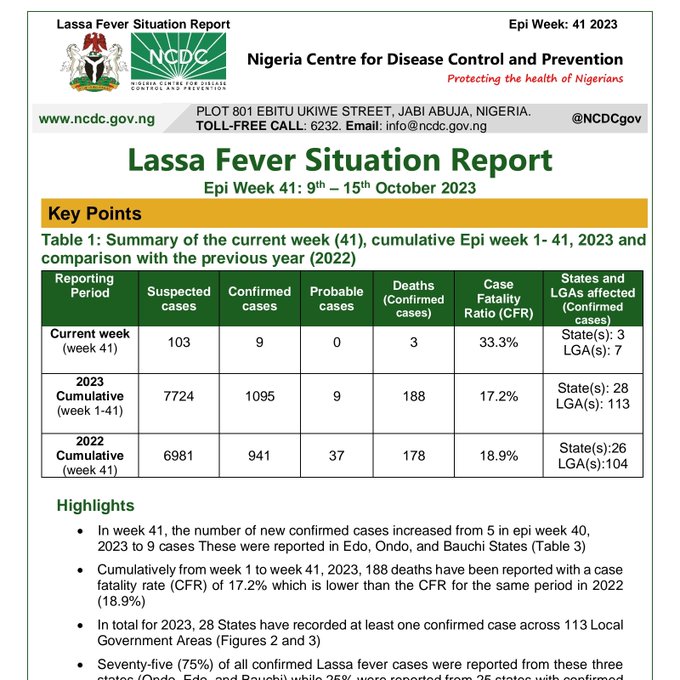Lassa Fever Claims 188 Lives in 28 States: Nigeria’s Battle Continues

Lassa fever, a devastating viral hemorrhagic illness, has wreaked havoc in Nigeria, with the Nigeria Centre for Disease Control and Prevention (NCDC) reporting a grim tally. A total of 1,095 Lassa fever cases and 188 fatalities have been documented across 113 local government areas in 28 states, according to the NCDC’s Lassa Fever Situation Report for Week 41 (October 9–15, 2023), released on Tuesday.
Understanding Lassa Fever
Lassa fever is caused by the Lassa virus, a member of the arenavirus family, and is characterized by acute symptoms. Humans typically contract the virus when they come into contact with food or household items contaminated by the urine or feces of infected Mastomys rats. This deadly disease is endemic among rodent populations in certain parts of West Africa.
Ongoing Public Health Challenge
Lassa fever remains a formidable public health challenge in Nigeria, fueled by factors such as poor environmental sanitation, lack of awareness, and late presentation of cases. The NCDC’s report reveals a startling number of suspected cases, totaling 7,724, with the death toll standing at 188.
Assessing the Outbreak
The report underlines the case-fatality ratio (CFR) of the outbreak, which currently stands at 17.2 percent. Notably, this figure is slightly lower than the CFR for the same period in 2022, which was 18.9 percent. The impact of Lassa fever in 2023 spans 28 states, with at least one confirmed case reported across 113 local government areas.
Regional Variations
The report also pinpoints three states—Ondo, Edo, and Bauchi—as the epicenters of the outbreak. Seventy-five percent of all confirmed Lassa fever cases have been reported in these states. Ondo leads with 35 percent of cases, followed by Edo with 29 percent and Bauchi with 11 percent. Moreover, the data highlights that the age group most affected by Lassa fever is 21–30 years, with cases spanning a wide age range from 1 to 93 years.
Gender Disparity
In terms of gender distribution among confirmed cases, the report reveals a slight bias towards males, with a male-to-female ratio of 1:0.9.
The battle against Lassa fever continues, with health authorities striving to raise awareness, improve sanitation, and enhance early case detection. Swift and concerted efforts are essential to mitigate the impact of this deadly disease on Nigeria’s population.
Also read >>>




